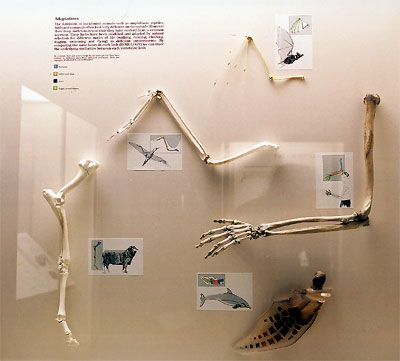Introduction to my solo exhibition at Roar Studios in Melbourne 1 - 13 June 1999.
INTRODUCTION TO EXHIBITION
The paintings in this exhibition span a time-frame of 21 years worth of effort. The recent computer work was a result of 8 weeks worth of sitting before a computer, creating in that short time approximately 3-4 years worth of my usual output of paintings.
The paintings basically all belong to my 'apocalypse' phase where humanity was to be stripped bare of dignity and meaning with the pointlessness of it all exposed. I have progressed though. My paintings now show that the immutability of objects whether animate or not, human or not, mechanical or not, can be breached in the visual sphere. After-all, all biology shares the same make-up: we are all composed of cells, which die constantly and are replaced constantly. And when we die, on the cellular level, that which does die is a completely different entity to that which was born. The cells we were born with have died and been replaced many times over. Basically we never are but are always in a state of becoming. Ultimately we are all composed of matter, nothing more than encapsulated quanta of energy. Everything ultimately is interchangeable.
Although in the past [my work included] representations of human birth and 'nurturement' of human foetuses by machinery [intended] to express the 'choice', or rather, lack of choice in being born into this pointless existence, those elements have disappeared. I do not anymore belabour the point of the involuntary nature of being born and the mindless perpetuation of this imposition of the same fate to others that have yet to be born by those that are born. Although my visual iconography has remained the same my more recent works simply reconstitute the animate with the inanimate, and within the animate 'bits' from nonrelated species become interchangeable. *[refer notes, below]
On a technical and artistic level I disagree with the notion that art should not be figurative, or that there should merely be “hints” within the painting with the rest left up to the viewer to interpret. If you have no idea you hope that your viewer invents one for you. It is a lot more difficult bringing incongruous elements together and making them appear to belong together, balance the composition so that it is not a random and poorly executed photomontage, than it is balancing abstract forms and colours. You have to begin with an idea, you have to build on it and you have to be capable of pulling it off. This is hard work! It can take anything from a week or two to reconcile a composition: make it work, after that it has to be drawn on the canvas, and then painted, a process that can take 4 - 9 weeks. I still find myself painting on images that I drew in my sketchbook in 1993-94.
Neither do I have time for what is mistermed as 'experimental art'. The purpose of any experiment is to provide an empirical basis for either the validation or refutation of a particular contention; an experiment proves or disproves. Thus an experiment once done need not be repeated over and over just for the sake of performing it! It is nothing more than a self-serving and pointless self indulgence.
* NOTES: Nature uses a similar process in the evolution of species...: "...the forelimbs of vertebrates which, whether they serve reptiles, birds, whales or man, show the same basic design of bones, muscles, nerves...The functions of legs, wings and flippers are quite different, yet they all are variations on a single theme: strategic modifications of a pre-existing structure... Once Nature has 'taken out a patent' on a vital organ she sticks to it... while its adaptation to swimming, walking or flying is a matter of evolution's flexible strategy." p204, Chapter XI "Strategies and purpose in evolution", from the book JANUS A summing Up, by Arthur Koestler isbn: 0 09 132100 X.
The photoraph (below) taken in the Australia Museum (Sydney) illustrates the point.

The text in the photograph reads: "The forelimbs of backboned animals such as amphibians, reptiles, birds and mammals often look very different on the outside. However their bony skeletons reveal that they have evolved from a common ancestor. Their limbs have been modified and adapted by natural selection for different modes of life (walking, running, climbing, digging, swimming and flying) in different environments. By comparing the same bones in each limb (HOMOLOGY) we can trace the underlying similarities between each vertebrate limb."

